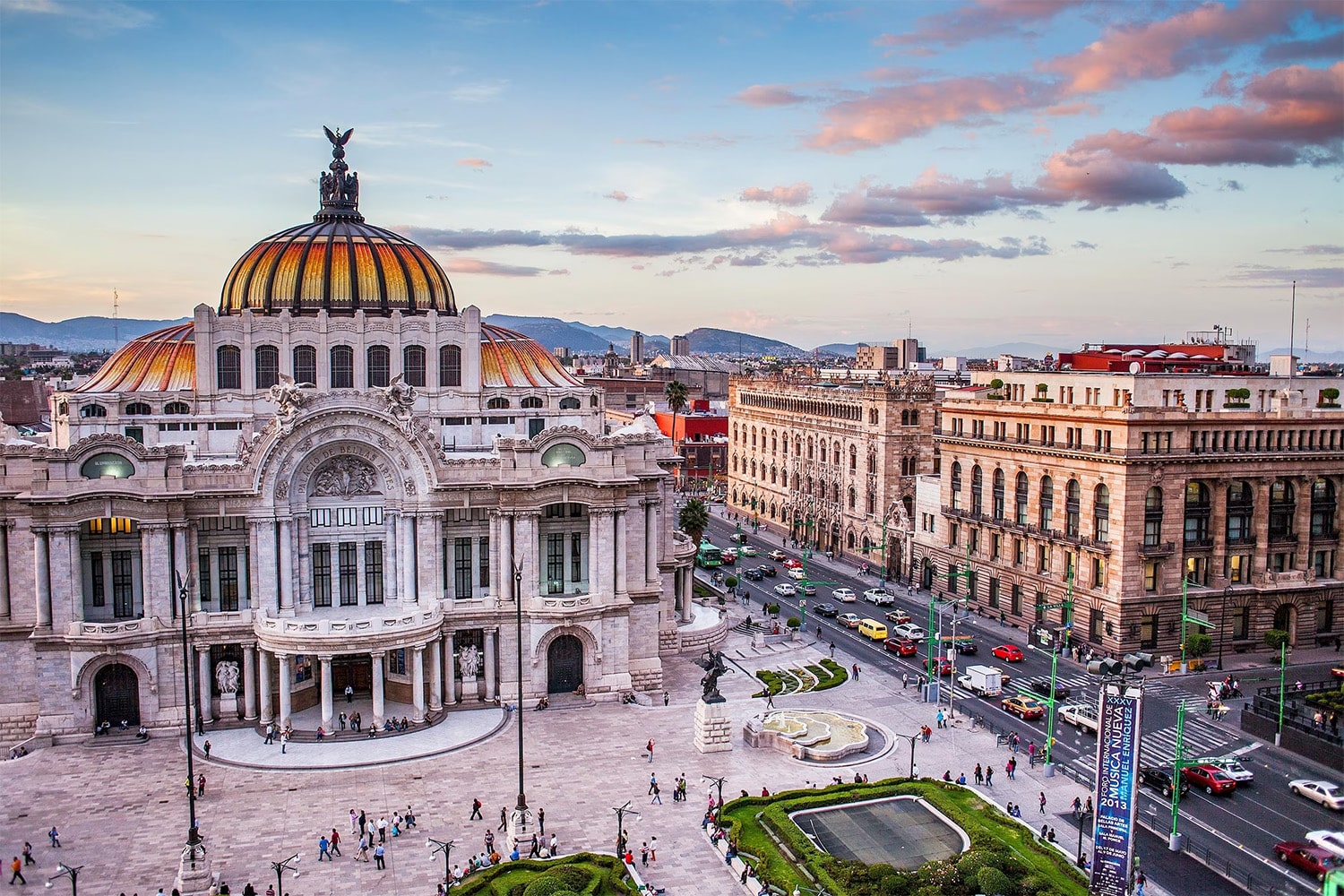
33 interesting facts about Mexico City
- 👁️ 313
Mexico City, a sprawling metropolis and the capital of Mexico, is as rich in culinary heritage as it is in history and culture. This vibrant city is a melting pot of flavors from every region of Mexico, making it a paradise for food lovers. From street food vendors selling tacos and tamales to high-end restaurants offering gourmet Mexican cuisine, the city offers an endless variety of tastes to explore. Traditional recipes passed down through generations stand alongside innovative dishes that redefine Mexican cuisine, each telling a story of Mexico’s diverse regions and cultures. Let’s embark on a gastronomic journey through Mexico City with some fascinating facts about its food.
- Mexico City is renowned for its street food culture, with thousands of vendors offering a wide array of local specialties.
- Tacos al pastor, a dish influenced by Lebanese immigrants to Mexico, is one of the city’s most iconic street foods.
- The city’s markets, like La Merced and Mercado de San Juan, are culinary destinations offering fresh produce, meats, spices, and prepared foods.
- Mexico City is the birthplace of “tacos de canasta,” which are steamed tacos often sold from bicycles by street vendors.
- The city hosts an annual event called “Feria del Tamal,” celebrating the variety and cultural significance of tamales.
- Mexico City’s culinary scene includes a strong representation of regional Mexican cuisines, from Oaxacan to Yucatecan.
- Chapulines (fried grasshoppers) are a popular snack in Mexico City, showcasing the pre-Hispanic tradition of insect consumption.
- The city’s restaurants and street stalls are famous for their salsas, which vary in ingredients and levels of spiciness.
- “Chiles en nogada,” a dish representing the Mexican flag’s colors, is widely served in Mexico City, especially around the time of Mexican Independence Day.
- The ancient Aztec drink “pulque” is experiencing a resurgence in Mexico City’s bars and pulquerias.
- Mexico City was designated a UNESCO Creative City of Design for its culinary innovation and preservation of traditional cuisine.
- “Barbacoa,” a traditional slow-cooked meat dish, is a weekend favorite in many of the city’s markets.
- The city is home to several high-end restaurants that have earned international acclaim, including spots on the World’s 50 Best Restaurants list.
- “Café de olla,” a spiced coffee traditionally brewed in a clay pot, is a favorite beverage in Mexico City’s cafes.
- Mexico City’s version of “torta ahogada” features a sandwich submerged in a spicy sauce, a twist on the classic dish from Jalisco.
- The city has a tradition of “Noche de Rabanos” (Night of the Radishes) during Christmas, where radishes are intricately carved into figures for display.
- “Pozole,” a hearty soup made with hominy and meat, is a common dish for celebrations and holidays.
- The Aztecs, the ancient civilization that founded Mexico City, cultivated chinampas (floating gardens) to grow much of their food.
- Mexico City’s culinary landscape includes influences from its large immigrant populations, including Spanish, Lebanese, and Chinese communities.
- “Enchiladas suizas,” a creamy, cheese-topped variation of enchiladas, were created in Mexico City.
- The city’s love for spicy food is evident in its wide use of chili peppers, from the mild poblano to the fiery habanero.
- “Elote,” or grilled corn, is a common street food, often served with mayonnaise, cheese, and chili powder.
- Mexico City was the first in Mexico to host a Michelin-starred restaurant, further establishing its status as a culinary capital.
- “Huitlacoche,” a delicacy made from corn fungus, is celebrated in the city’s cuisine for its unique flavor.
- “Aguas frescas,” refreshing beverages made from fruits, flowers, or seeds, are popular throughout the city.
- The city’s bakeries, or “panaderías,” offer a wide variety of breads, including the traditional “pan de muerto” and “rosca de reyes.”
- Mexico City’s version of hot chocolate, often prepared with water and spiced with cinnamon, is a nod to its Aztec origins.
- “Nieves,” traditional Mexican ice creams and sorbets, come in a plethora of flavors, including unconventional ones like avocado and tequila.
- The city has a growing vegan and vegetarian scene, with restaurants dedicated to plant-based versions of Mexican classics.
- “Mole,” a complex sauce made with a blend of spices, chocolate, and chili peppers, varies widely across Mexico City’s eateries.
- Street vendors in Mexico City play a crucial role in preserving traditional cooking methods, such as cooking over charcoal or comal.
- The city is a hub for culinary education, hosting several prestigious cooking schools that attract students from around the world.
- Mexico City’s culinary festivals and events, such as the Festival de México, showcase the diversity and richness of Mexican cuisine.
Mexico City’s food is as diverse and vibrant as the city itself, offering an exploration of flavors that spans centuries of history and cultural exchange. From the humblest street food stall to the most sophisticated gourmet restaurant, the city serves up dishes that tell the stories of its people and their traditions. As a destination for food lovers, Mexico City provides an endless journey through tastes, aromas, and textures, inviting all who visit to partake in its culinary riches. The city’s commitment to preserving its culinary heritage while embracing innovation ensures that its food scene will continue to captivate and inspire for generations to come.
Mexico City, a sprawling metropolis and the capital of Mexico, is as rich in culinary heritage as it is in history and culture. This vibrant city is a melting pot of flavors from every region of Mexico, making it a paradise for food lovers. From street food vendors selling tacos…